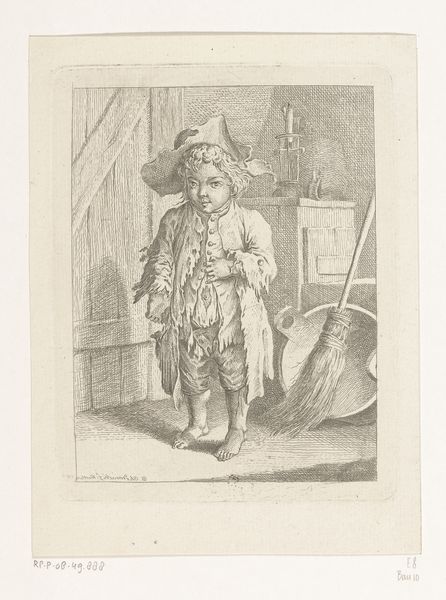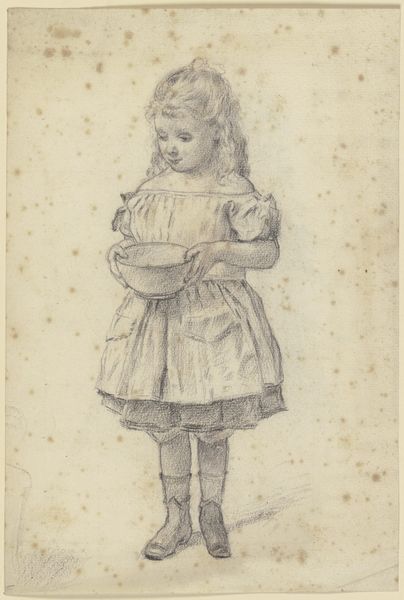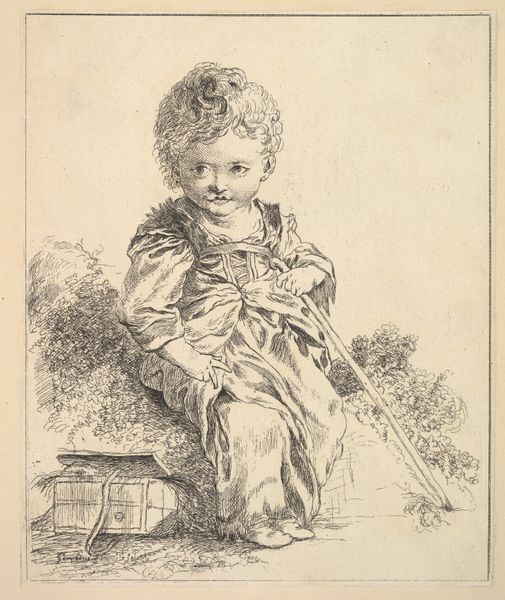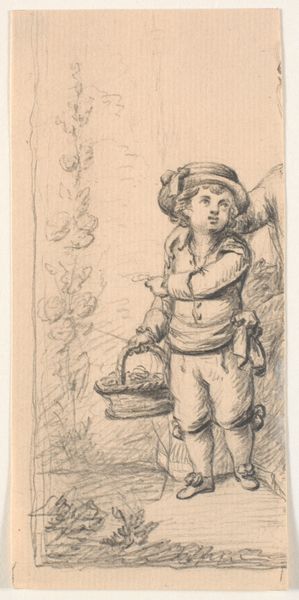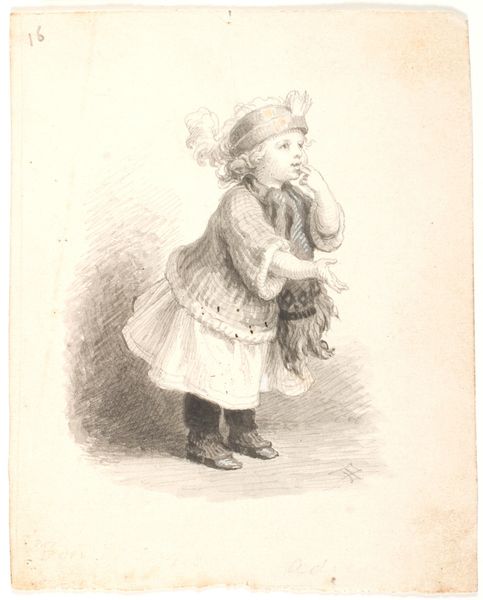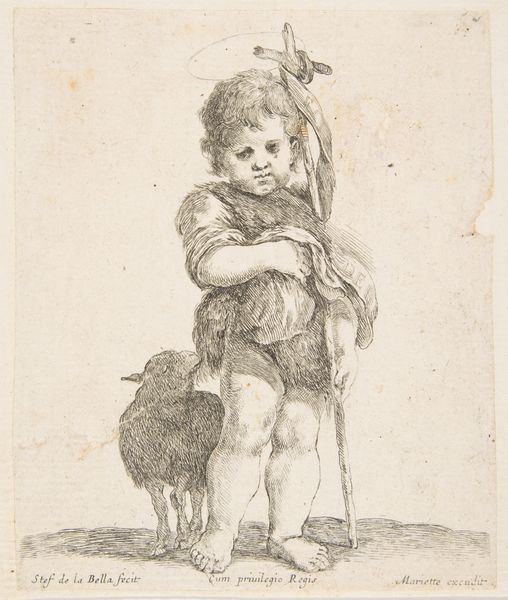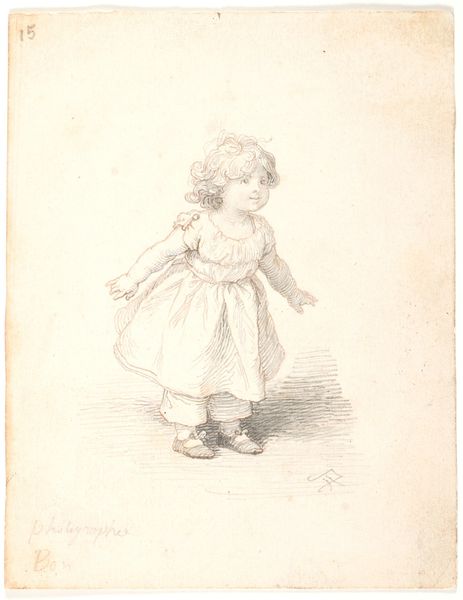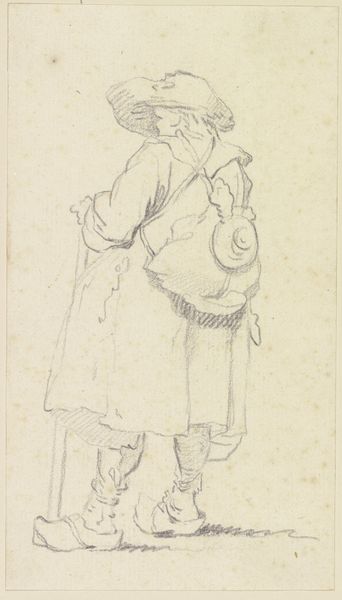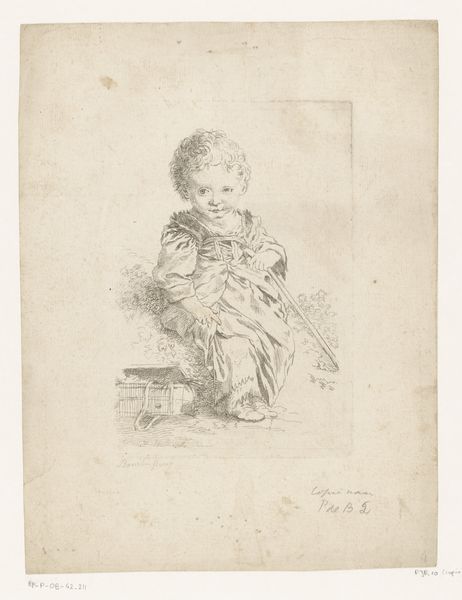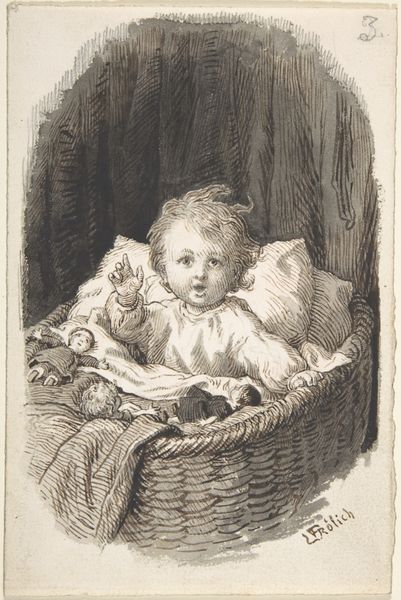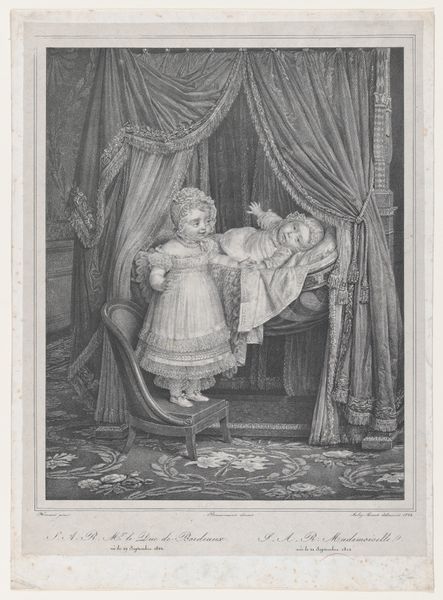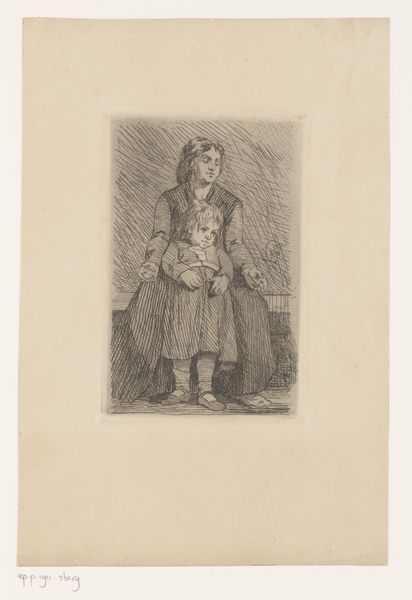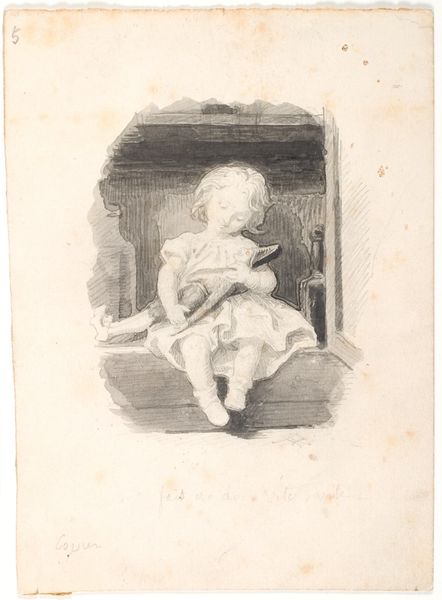
drawing, print, pencil
#
portrait
#
drawing
#
baroque
# print
#
figuration
#
pencil drawing
#
pencil
#
genre-painting
Dimensions: sheet: 20.2 × 13 cm (7 15/16 × 5 1/8 in.) plate: 14.8 × 11.4 cm (5 13/16 × 4 1/2 in.)
Copyright: National Gallery of Art: CC0 1.0
Curator: What a fascinating, if unsettling, image. We are looking at Daniel Nikolaus Chodowiecki’s "Poor Boy Showing His Navel," created as a print in 1758. Editor: My initial response is a strong sense of discomfort. The stark presentation of this raggedly dressed child, almost on display... It feels deeply unsettling. Curator: Absolutely. Chodowiecki, in his choice of printmaking as a medium, ensured wider circulation of such genre scenes. This allows us to explore the contemporary social gaze on poverty and the laboring classes in the Baroque period. Consider how printmaking, in itself, democratized imagery, bringing such subjects to a broader audience. Editor: It’s striking how this "Poor Boy" is presented with almost baroque grandeur, despite his evident destitution. The detailed etching, the pose – there’s a performative aspect, like a miniature drama being enacted for an audience. What role does the institution—in this case, the art market and distribution of images—play in framing our understanding of poverty? Curator: Precisely! And consider the boy’s clothes. Note how meticulously the artist captures the texture of the worn fabric, the visible stitching of repair... The very materiality of his poverty is presented as worthy of artistic attention, which subtly questions prevailing social values and norms regarding craft, consumption, and the display of wealth or the lack thereof. Editor: It also prompts a closer look at the implied politics of imagery. What narrative is constructed around the figure of a ‘poor boy’? Is it one of innocence, exploitation, or something else entirely? And how might such depictions shape the socio-political landscape? It seems to hint to a certain power dynamic. Curator: It is, without doubt, a commentary on how we consume images and how our gaze often reflects our social positioning. This detailed work transcends mere representation; it implicates us, the viewers, in the narrative of poverty. Editor: Ultimately, this work confronts us with the difficult relationship between representation, reality, and social power, prompting deeper examination on institutional influence in historical understanding. Curator: Yes. In exploring Chodowiecki’s work, we understand the important intersection of materials, method and cultural messaging and our roles in these complex negotiations.
Comments
No comments
Be the first to comment and join the conversation on the ultimate creative platform.
